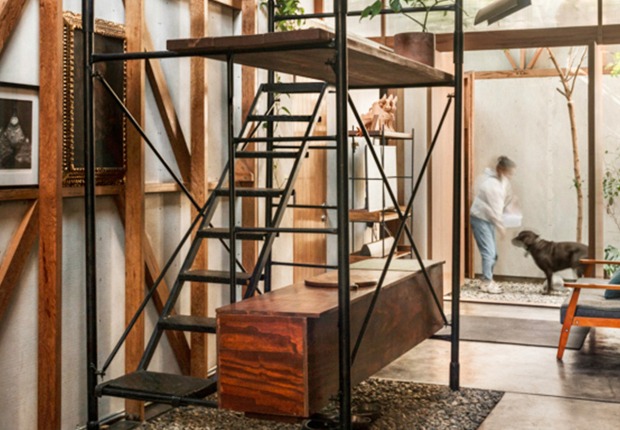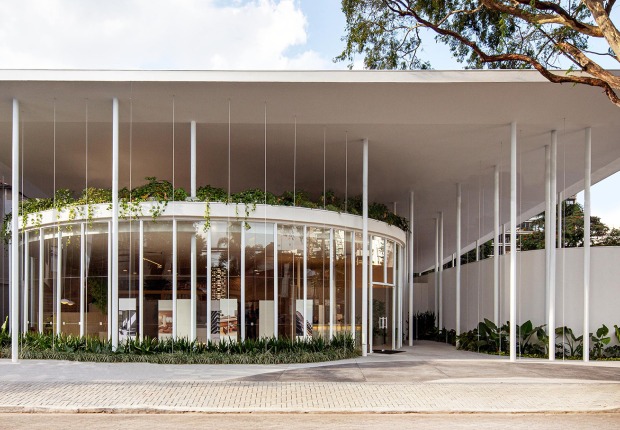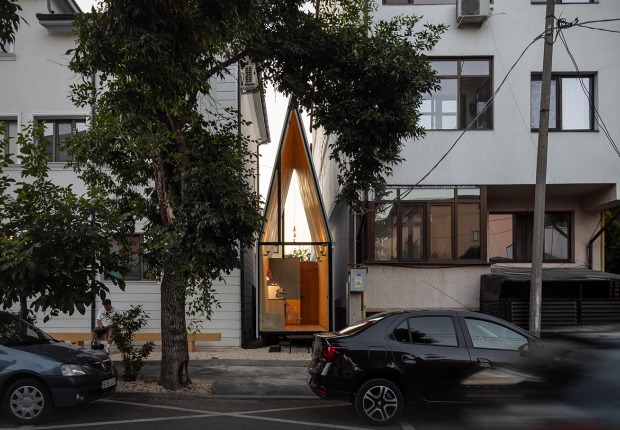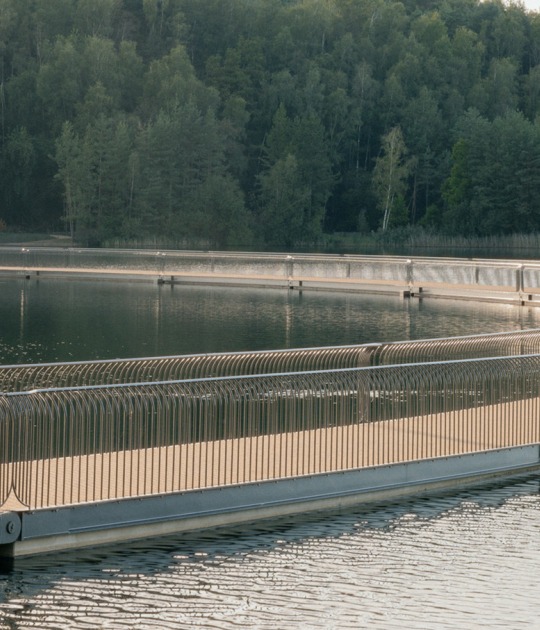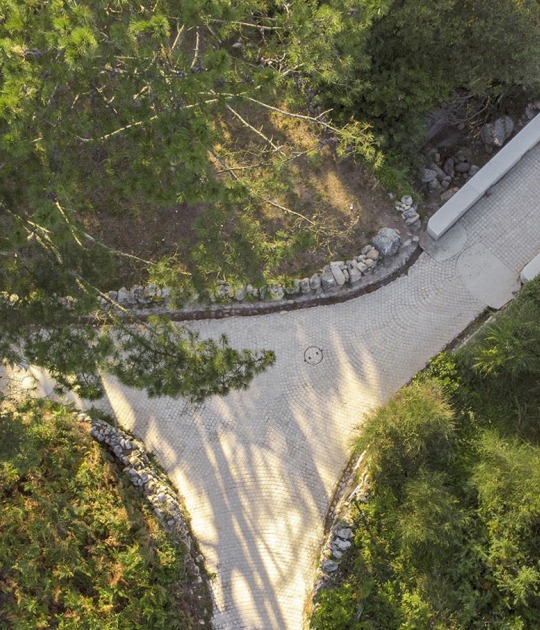
Burolandschap was inspired by the interpretation of the golden ratio through an ancient mathematical formula by Fibonacci that has fascinated artists and scientists for centuries. Following the geometry proposed in the formula, they drew a curve as the natural path that best integrates the connection between the two shores of the lake. This arrangement increases the perception of the surrounding landscape for those crossing the lake, allowing both hikers and cyclists to enhance their view of this new nature.
The 400-meter-long footbridge is composed of 30 articulated elements, a modular system that makes it flexible and adaptable, facilitating its movement according to the water level, which can fluctuate by up to 130 centimeters. Furthermore, the structure ensures that the bridge does not move with wind waves, ensuring stability for cyclists. The pontoon bridge constitutes a new node in the Limburg cycling route network. Furthermore, this hiking connection will also be integrated into the hiking network of the Hoge Kempen National Park.

Cycling Between Terrils by Burolandschap. Photograph by Pieter Rabijns.
Project description by Burolandschap
Along the water of the terrils, where the past of the coal mines is still visible, a floating bicycle bridge unfolds, gliding elegantly across the pond between the terrils. 'Cycling between Terrils' symbolizes connecting nature and heritage with the future.
Cycling between Terrils is a floating bridge on the border between two municipalities with a visible mining past. The area was transformed in the 20th century by the mining of coal in the subsoil, which created the mining terrils. Later, gravel was also mined in the area, creating a large pool between the two mining terrils. All these mining activities visibly changed the relief over several decades, creating a unique landscape. Nowadays, raw materials are no longer mined, but the mining terrils still characterize the Limburg landscape. Starting in the 21st century, the landscape was transformed into a leisure and experience landscape in which the cyclist and hiker play an important role.

The inspiration for this project springs from the ideas of Fibonacci, an ancient mathematical formula that has enchanted artists and scientists alike over the centuries. The Golden Section, a fundamental principle within Fibonacci's theory, inspired us in the design process. We chose not to lay the connection between the two banks straight across the water, but to transform it into a curved natural shape that is fully embedded in the landscape according to the proportions of the Golden Section. This shape reduces the cyclist's speed and offers the user a series of varied views, creating a unique cycling and walking experience.
The bridge transcends its role as a functional thoroughfare and becomes a symphony of architecture and landscape. Its flowing lines and organic movements pay homage to the surrounding nature, while providing an inviting path for cyclists and walkers to enjoy the serene surroundings in its rich industrial history. But the design doesn't stop at the bridge itself. It spreads through the impressive landscape, where it interweaves with its surroundings. When you walk or bike across the bridge as a visitor, you are drawn into the experience and surprised by the connection between man and nature that comes to life there. With an impressive length of 400 meters, it is not only the longest floating bicycle bridge in Belgium but also unique in the world. Its imposing size makes it not only an architectural masterpiece, but also a functional and practical solution for connecting two municipalities by water.

The bridge is composed of 30 hinged elements, making it flexible and adaptable to the conditions of the environment. This modular design allows the bridge to move up and down with the water level, which can rise or fall as much as 130 centimeters. These dynamic properties allow the bridge to adapt to changing water levels. The technical elaboration ensures a stable structure that prevents the bridge from moving with every wave and guarantees cycling comfort. The pontoon bridge forms a new node on the bicycle route network in Limburg; it is an indispensable link in this extensive bicycle route network and provides a unique experience in the cycling province. Moreover, this hiking connection will also be integrated into the hiking network of the Hoge Kempen National Park.















